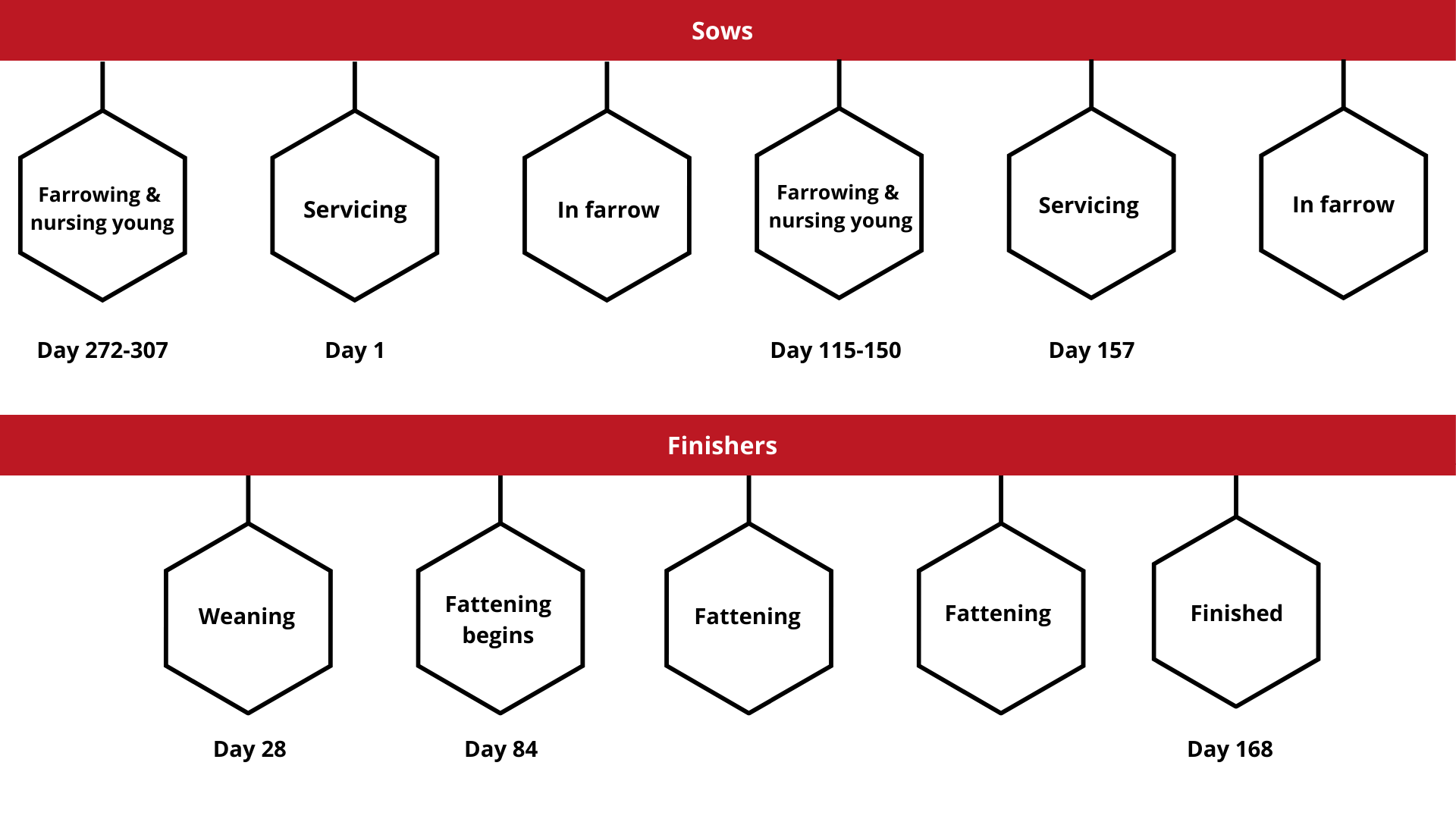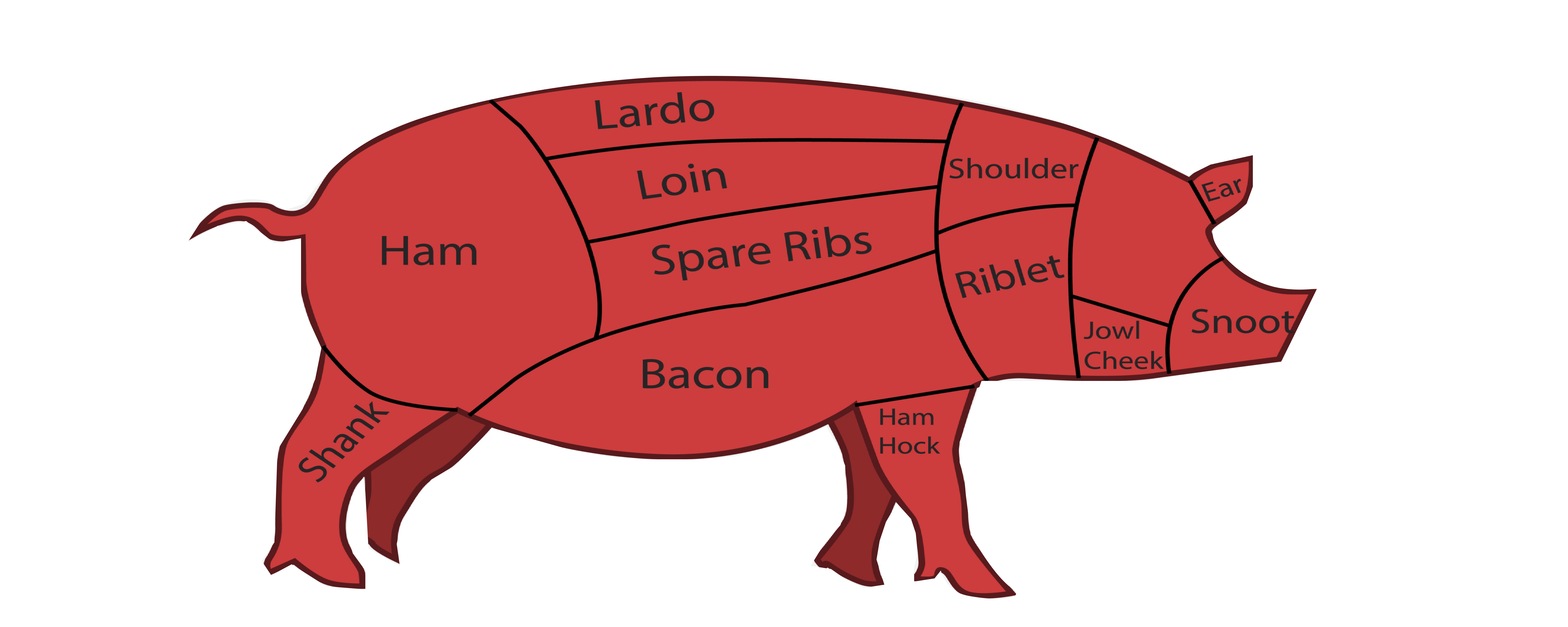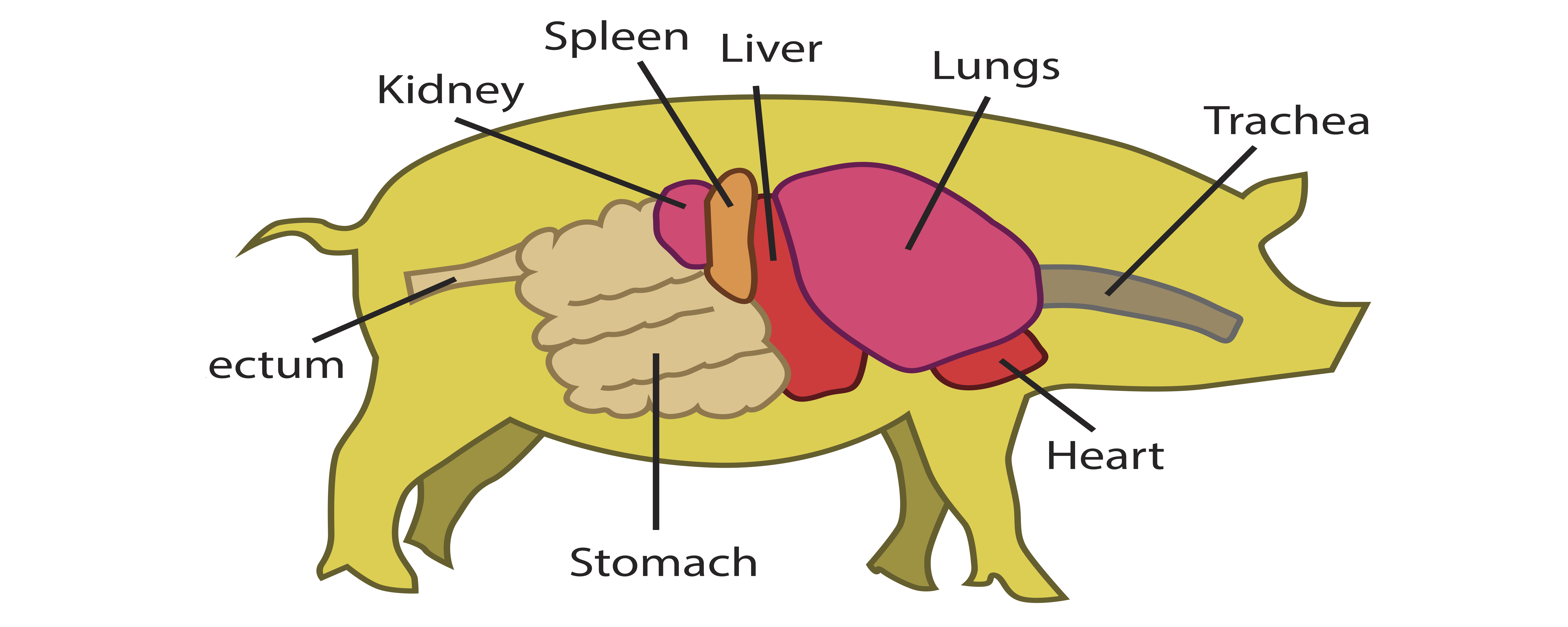Pigs
In Ireland, the majority of pig farming occurs indoors in pig production units. The breeding, rearing and fattening of pigs takes place on one farm. The typical breeds used are large white and landrace, cross breeds of these are also common.
There are also some farmers that produce pigs through free-range outdoor practices. The breeds selected for these systems must be hardy e.g. Oxford-Sandy and Black.
In both systems, there are strict rules that apply:
- All pigs must be able to lie down,
- All pigs must have access to a clean area to rest,
- All pigs must be able to see other pigs.
Breeds of Pigs
Large White
Large White
Are an English breed with a short deep body and erect ears. They have a large litter size of 12-16 and are considered very good mothers to their piglets.
Landrace
Landrace
Are a breed that originated in Denmark and are known for their floppy ears. They have a very long body with good conformation.
Other Breeds
Other Breeds
Breeds of pig include Tamworth, Wessex, Gloucester Old Spot and Oxford Sandy and Black.
Husbandry
There are a number of different housing areas that are required within pig production units.
Farrowing house This house is designed for birthing. During farrowing, piglet mortality is a strong concern but this can be reduced through the use of a farrowing crate. Sows are kept in a farrowing crate from seven days pre-farrowing up until piglets are weaned. The temperature of the farrowing house is hugely important, a minimum of 20℃ for the farrowing area and 30℃ for the creep area (a rest area for piglets in between suckling). Newborn piglets need to be kept warm, dry and sheltered from draughts and must be given an iron injection to prevent iron deficiency anaemia. The farrowing house should be power-washed and disinfected between each set of sows.
Service house This house is designed for natural servicing and artificial insemination (AI) of sows. Boars are also kept in this house and are used to recognise onset of oestrus in sows and to naturally service gilts (first time mothers). A sow's oestrus cycle lasts 18-24 days, with 2-3 days of heat at the end of each cycle. Sows are serviced using AI twice during oestrus. Gilts may be serviced once with AI and once by natural servicing.
Dry sow house Pregnant sows are kept in the dry house during gestation, which lasts for three months, three weeks and three days. Boars may also be kept in the dry sow house. During this time, the sow’s energy is being used for the growth and development of piglets rather than feeding her young. Dry sow ration contains roughly 17.5% protein and is fortified with lysine (lysine is an important amino acid that is required for the development of muscle protein). Ration with a higher fibre content can help keep a sow satisfied.

Weaner house Once piglets (or bonhams) have been weaned off their mother’s milk, they are grouped according to size and put into a weaner house. The temperature is kept at 30℃ as is in the creep area of the farrowing house but is gradually decreased to roughly 24℃. The first few weeks of weaning is a time of abrupt change for piglets; diet change, maternal separation, vaccinations and exposure to new pathogens so they must be well cared for during this time.
Fattening house Pigs are aged between 3-6 months at this stage. Pigs are monogastrics and should be fed ration that is ground into meal, not rolled. Lower protein diets are better for pigs than higher protein diets, this decreases the incidence of diarrhoea and the growth of certain bacteria such as e-coli. Tail biting is common in units where pigs are bored, therefore adding materials that are chewable and edible should be provided e.g. ropes or straw. This is known as environmental enrichment and it is a legal requirement on EU pig farms. Routine tail-docking is illegal in the EU.
Pig Anatomy


Pork Nutrition
Pork is a source of high quality protein. All ages need protein to grow and to maintain healthy muscles.
Lean pork only contains 4% fat and is naturally low in salt.
Lean red meat is one of the best sources of easily absorbed iron which is important for healthy blood to carry oxygen around the body. It also contains zinc and is high in selenium both of which are needed for a healthy immune system.
Pork contains all eight of the B vitamins, which are needed for a healthy body, especially for energy metabolism and brain function. It is also a source of Vitamin D, the sunshine vitamin.